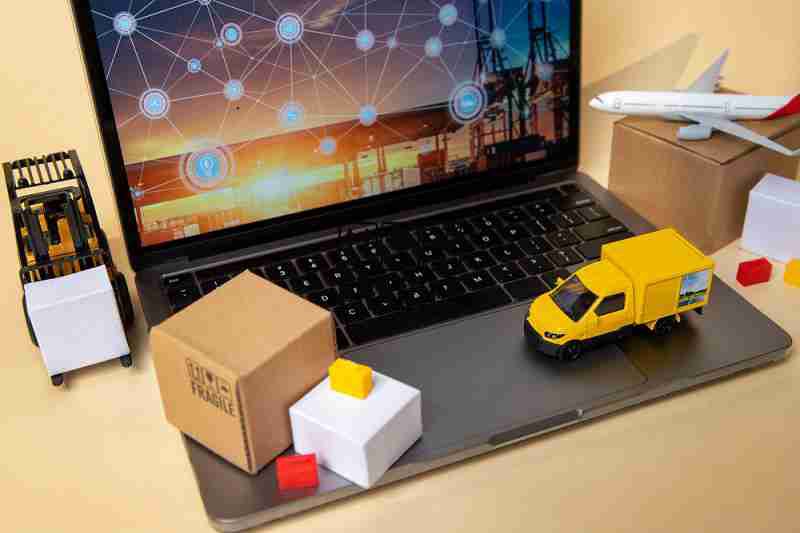
Ocean freight is just one of many industries that have undergone radical change since the advent of digital disruption. This blog will examine the significant effects of digital technologies on shipping containers and the difficulties and possibilities they present. The frequently family-controlled and network-centric liner shipping industry, in contrast to other sectors like the media, telecom, banking, retail, and other traffic modes, has historically been conservative in adopting innovations; as a result, it is still far behind in embracing digitalization.
Practitioners in this sector can assess the digital maturity levels of their business functions by using the digital maturity categories applied to liner shipping. Moreover, based on data from interviews, the definition of digital transformation for the maritime logistics industry has been provided, along with a list of the 19 various pathways to digital transformation and the 9 main barriers to it.
Let's look at how digital disruption is changing the way that ocean freight is handled.
4 Ways Digital Disruption is Changing Ocean Freight Handling
Digital Transformation in Sea Container Transport
Digital technologies have revolutionized the operation of sea container transport. The industry traditionally relies on labour-intensive supply chain operations, paper-based procedures, and manual processes. However, the process has been streamlined by a number of technological developments brought on by the advent of digital disruption. Nowadays, effective cargo tracking, documentation, and stakeholder communication are made possible by automated systems and software solutions. This digitization has greatly improved transparency, lowering mistakes and delays in handling sea freight cargo.
Sea Freight Shipping Companies and Technological Innovations
Leading ocean freight shipping firms adopt technological advancements to stay competitive in the digital age. To streamline operations, boost productivity, and provide customers with real-time visibility, businesses use technologies like blockchain, AI, and the Internet of Things (IoT). IoT devices installed on containers allow for real-time monitoring of the conditions of the cargo, such as temperature and humidity, ensuring the integrity and safety of the goods.
AI algorithms examine data to anticipate potential hiccups and optimize shipping routes, reducing costs and delays. Blockchain technology provides secure and transparent documentation for international shipments' complicated paperwork.
Impact on Sea Freight Shipping Costs and Rates
Sea freight shipping rates and costs have been significantly impacted by digital disruption. Process automation and increased effectiveness have helped sea freight shipping companies cut operational costs, potentially saving customers money. Better decision-making is made possible by real-time data and analytics, which optimize container utilization and decrease empty container movements, thereby reducing overall shipping costs. Digital marketplaces and platforms also link shippers and carriers, promoting price transparency and competitive freight shipping rates for customers.
Opportunities and Challenges in Ocean Freight
Ocean freight stakeholders face numerous opportunities and difficulties due to digital disruption. The adoption of digital technologies offers, on the one hand, increased productivity, lower costs, and higher customer satisfaction. The ability to solve problems proactively, reduce disruptions, and boost supply chain resilience is made possible by increased visibility and data-driven insights. Additionally, digital freight platforms and marketplaces make access to a larger network of carriers and logistics service providers possible, increasing opportunities for cooperation and business expansion.
Nevertheless, there are some drawbacks to the digital disruption as well. Cybersecurity threats risk data privacy and integrity, necessitating strict security protocols. A change in mindset and skill sets is also sometimes required because traditional processes can resist change. Adopting and integrating new technologies may be challenging for smaller businesses and stakeholders with limited resources, potentially leading to a digital divide within the industry.
Conclusion
Ocean freight has unquestionably been affected by digital disruption. Technology advancements have revolutionized operations in the sea container transport industry and provided numerous benefits to stakeholders. Digital disruption is reshaping the industry, from increased visibility and cost savings to improved efficiency and collaboration opportunities.
The need for widespread adoption and integration of digital technologies and the risks related to cybersecurity must be addressed. The ocean freight sector can use digital disruption to navigate the changing landscape and realize its full potential by continuing to innovate and work together.
Find out how digitalization can transform the way that sea freight is transported, as well as the companies that ship it, the price of shipping it, how much it costs, and how much it costs per container. Maintain up-to-date knowledge of the newest developments and trends to help your company. Don't miss out on reading this insightful article from FreightMango, your go-to partner in the digital age of logistics.





 Get instant quote
and compare offers in real time
Get instant quote
and compare offers in real time